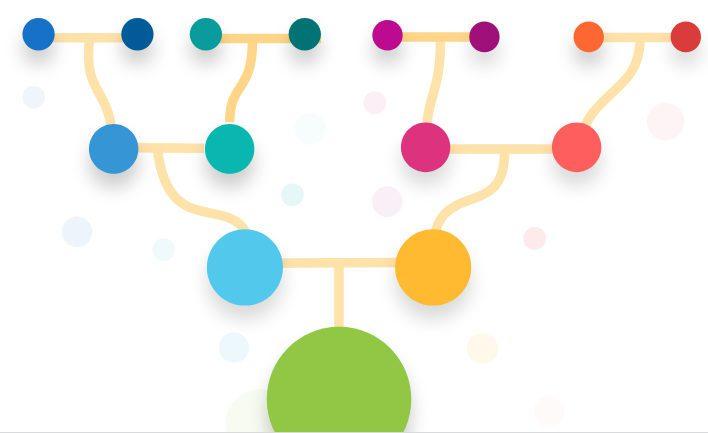In genetics, pedigrees are essential for many more reasons than you might think.
It is not just about creating family trees or seeing how family members are related. Pedigrees are also helpful for studying diseases and understanding broader questions about family structure and how people marry and migrate. They can also be used to discover facts about long-dead ancestors, such as their phenotypic traits and where they came from.
A New Method Called Bonsai
Researchers at 23andMe recently created a new method for inferring large human pedigrees. The American Journal of Human Genetics published this new method, dubbed Bonsai, which uses a new algorithm to build very large pedigrees. These new methods can quickly and efficiently assemble small pedigrees into a larger family tree that shows degrees of separation between individuals.

An illustration of some of what goes into the Bonsai method for creating very large human pedigrees.
These pedigrees can also help in studying the link between genetics and disease. Pedigrees can be helpful, especially when a disease is rare. In Genome-Wide Association Studies — a common method for discovering the genetic factors related to a common phenotype or disease — scientists must thin their sample to remove close relatives. Or they must leverage known relationships to increase the number of subjects that can be included, thus the statistical power for detecting associations. If full pedigrees are known, it opens the door for using a broader range of statistical methods. This, in turn, can be used to detect disease association and discover so-called de novo mutations that occurred for the first time in a family member.
Bridging Gaps
The ability to construct extensive pedigrees is also helpful for genealogy. In particular, the ability to use genetic data to infer pedigrees can help

Ethan Jewett, Ph.D., a 23andMe population geneticist.
bridge gaps in historical records and help detect places where the records may be inaccurate. Using the reverse rules of Mendelian inheritance makes it possible to assign present-day alleles to the ancestors from whom they came, thus revealing the genotypes carried by long-dead ancestors. When these alleles are associated with phenotypes or ancestry from a particular population, it’s possible to make educated guesses about the physical traits of ancestors. One could use the same method to find out where they came from.
23andMe’s new Bonsai method improves existing methods for building extensive pedigrees and opens up other possibilities, said Ethan Jewett, Ph. D., a 23andMe population geneticist working on probabilistic methods and lead author of the paper.
“Big pedigrees make it possible to explore questions about family structure,” Ethan said. “For instance, how common a certain type of relationship is in a given population, like double cousins.”
Large Pedigrees
Pedigrees inferred from DNA allow researchers to examine other issues. They could help determine how often a self-reported pedigree agrees with an inferred pedigree. In other words, they can tell us how well people know their family trees. The paper found several instances of self-reported family trees with at least one misidentified relationship.
There are other larger population-level insights researchers can learn from these large pedigrees. For example, the method allows researchers to determine the ancestry composition of the average pedigree in the United States, traced back several generations. Another example of the process could help answer questions like how often people have kids with people outside of their cultural or ancestral group. This work can also help improve our understanding of the age distributions for different types of relationships, such as parent-child, or grandparent-grandchild, or first cousins. That ultimately can help in 23andMe’s ability to predict relationships. Understanding those relationships can also offer insights into human history and disease.
This new method improves the efficiency and accuracy of building large and complex human pedigrees.
You can read more about the method here.




